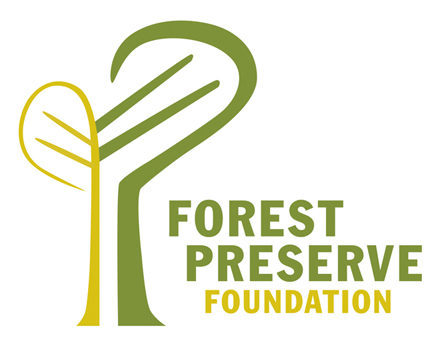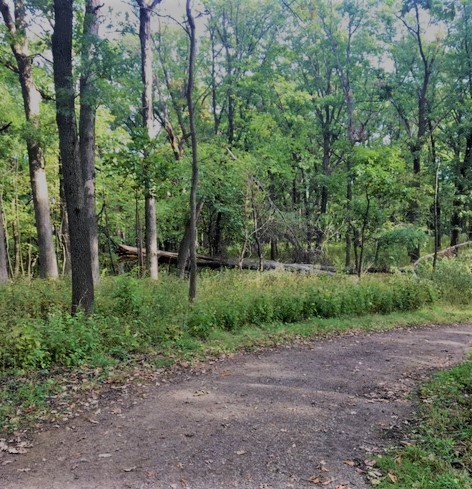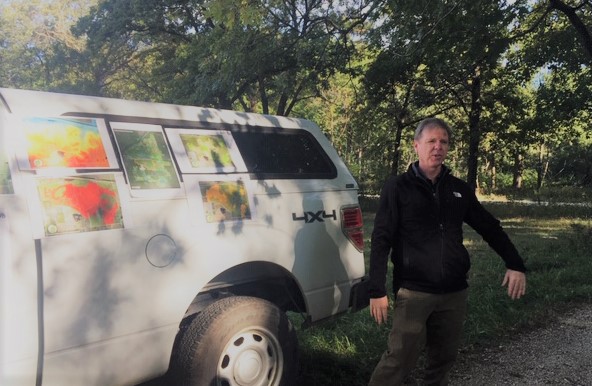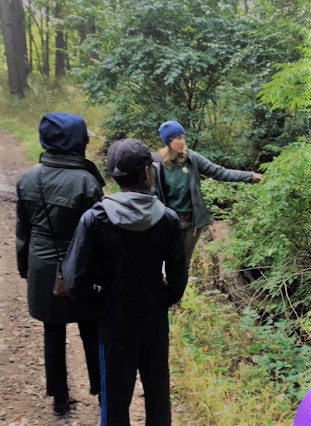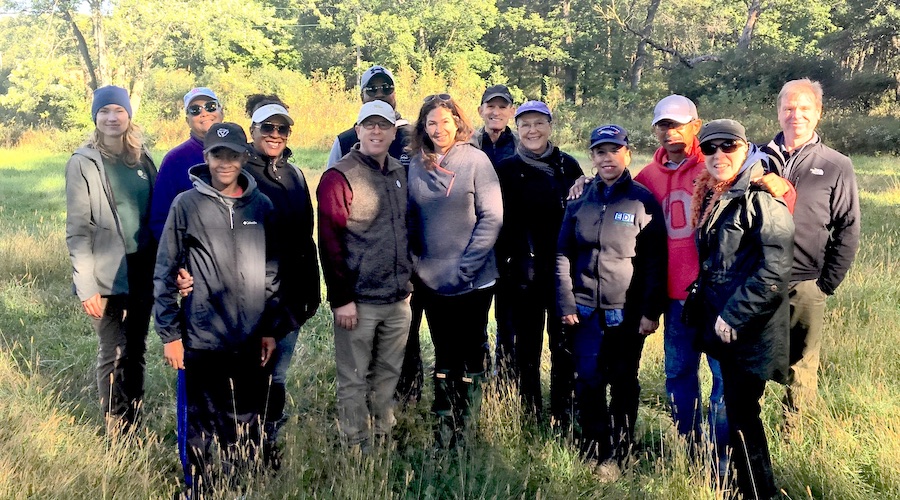
Editor’s note: Earlier this year, the Foundation supported restoration efforts in Cap Sauers Holding Preserves with funds received from a generous anonymous donor. On Oct. 5, two Forest Preserve staff members led a walk through the Preserves to show board members, donors and guests the results of that work.
By Kristin Pink and Chip O’Leary, Forest Preserves of Cook County
Have you been to the most remote place in Cook County?
You have if you’ve visited Cap Sauers Holding Nature Preserve in southwest suburban Palos Park. At 1,500 acres and spanning more than two miles east to west, it’s the largest roadless tract in Cook County and the largest nature preserve in northeastern Illinois.
A close-up look
On a Saturday morning in mid-October, Forest Preserve Foundation board members, donors and guests went hiking these big woods. They were there to get an up-close look at restoration work in the Forest Preserves of Cook County. Restoration repairs ecosystems that have been disrupted by human intervention.
Led by Forest Preserve ecologists, the group walked through the cool morning air on a wooded trail. They saw huge bur oak trees and the elegant flight of a great-horned owl. But they also saw plants that pose an environmental threat. Invasive species like Asian honeysuckle and Oriental bittersweet grow in our Preserves, threatening to displace native plants and animals.
Invasive plants like honeysuckle shade out native plants, leaving behind an impenetrable wall of 10-foot brush that can easily dominate in the preserve. Wildflowers cannot grow beneath honeysuckle, and it doesn’t attract pollinators, either. When invasives take hold, the result is a degraded landscape, essentially honeysuckle and bare ground. Honeysuckle also blocks beautiful views of the rolling landscape and Cap Sauers’ unusual geologic features, especially the peaky esker that runs through the center of the preserve.
A guard against climate change
Alarmingly, the group learned that climate change is expected to make conditions more favorable for the growth of invasive species. The need for restoration is more urgent than ever. Cap Sauers Holding must be restored to the healthiest condition now to make this ancient ecosystem as resilient as possible.
The Forest Preserves, the Forest Preserve Foundation, partners, and volunteers are working at Cap Sauers to remove invasive plants. Experience tells us native plants and animals rebound after restoration. The group got to see this recovery first-hand as they walked the “green trail” that runs along the south end of the preserve.

A donor’s impact
Earlier this year, restoration work begun by dedicated volunteers and staff got a big boost. That’s when a donor made a $250,000 anonymous gift to the Forest Preserve Foundation, which was used to underwrite the restoration of 120 acres of Cap Sauers Holding. The donor, inspired by the dedication of volunteer stewards, wanted to bolster their efforts. With the combined efforts, more than one-third of Cap Sauers is now undergoing restoration.
For those who participated in the walk, the experience was enlightening. “I truly enjoyed the experience,” said Leslie Sawyer, president and CEO of Environmental Design International, Inc. “My husband, Rick Redmon, and I truly enjoyed the experience. We are both nature lovers and appreciate the important work that you and the Forest Preserve Foundation, with the critical support of donors and volunteers, are doing to restore this wonderful natural asset for our current and future community.”
Momentum is building for these kinds of public-private partnerships, which are restoring sites like Cap Sauers. Community leaders understand the importance of this work and want to help restore the entire preserve. The Forest Preserves and its partners are working hard to transform the most remote place in Cook County into one of the most beautiful.
Kristin Pink is a Resource Ecologist II for the Forest Preserves of Cook County. Chip O'Leary is Deputy Director, Department of Resource Management for the Forest Preserves of Cook County.
